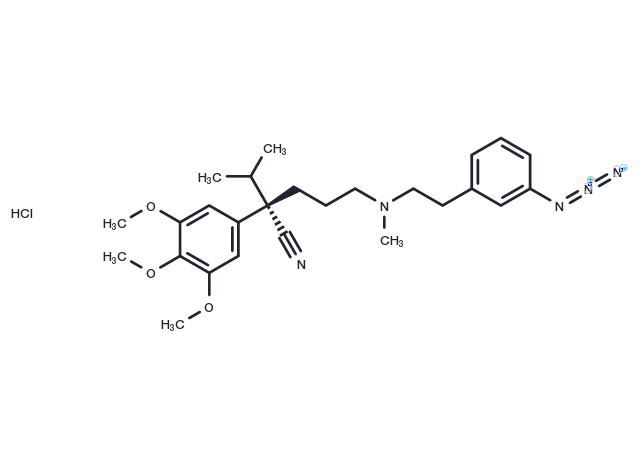Powder: -20°C for 3 years | In solvent: -80°C for 1 year


LU 49888 is a photoaffinity analog of verapamil that has been used to identify specific binding sites for phenylalkylamines of calcium channels present in rabbit skeletal muscle microsomes.

| Pack Size | Availability | Price/USD | Quantity |
|---|---|---|---|
| 25 mg | 6-8 weeks | $ 1,520.00 | |
| 50 mg | 6-8 weeks | $ 1,980.00 | |
| 100 mg | 6-8 weeks | $ 2,500.00 |
| Description | LU 49888 is a photoaffinity analog of verapamil that has been used to identify specific binding sites for phenylalkylamines of calcium channels present in rabbit skeletal muscle microsomes. |
| Synonyms | Azidopamil, LU49888, LU 49888, Ludopamil, LU-49888 |
| Molecular Weight | 502.06 |
| Formula | C26H36ClN5O3 |
| CAS No. | 109293-20-1 |
Powder: -20°C for 3 years | In solvent: -80°C for 1 year
You can also refer to dose conversion for different animals. More
bottom
Please see Inhibitor Handling Instructions for more frequently ask questions. Topics include: how to prepare stock solutions, how to store products, and cautions on cell-based assays & animal experiments, etc.
Lu49888 HCl 109293-20-1 Azidopamil LU49888 LU 49888 Ludopamil Lu-49888 HCl LU-49888 inhibitor inhibit
